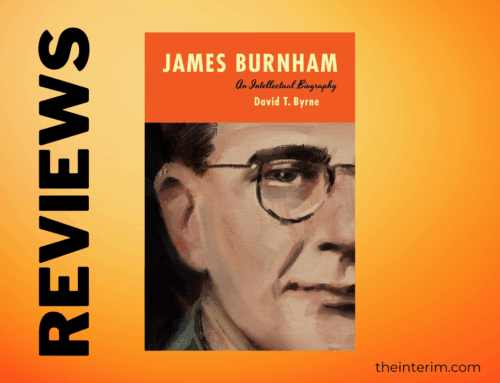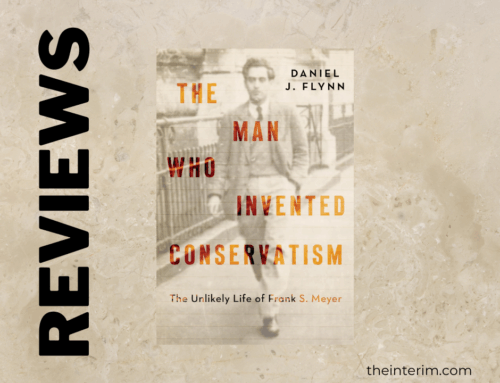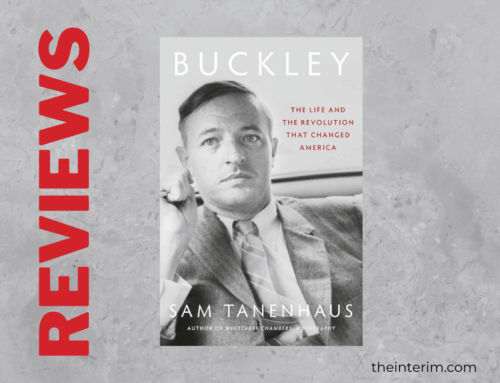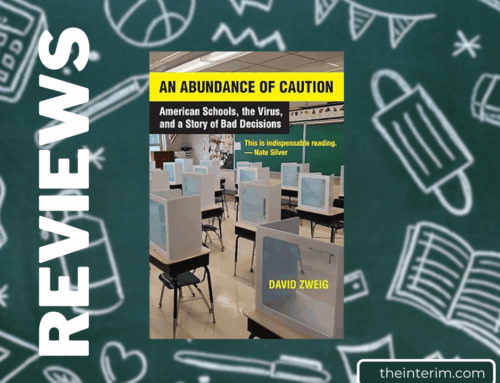The Chicago Manual of Style 18
University of Chicago Staff (University of Chicago Press, $97.50, 1180 pages)
 The offices of The Interim have used the latest Chicago Manual of Style since its present editor took charge of the paper in 2000. While the paper does not adhere to its stylistic conventions (we follow Canadian Press style), it is a regularly consulted guide. The Manual has been published since 1906, an essential resource – some might say the standard — for writers, editors, and publishers of American English. It makes declarations on proper spelling, grammar, capitalization, references, and much more. The new volume has a larger discussion of the role of artificial intelligence in writing, a topic that was not addressing in its previous edition published in 2017, so there is now counsel on how to address copyright and the publishing of AI-generated images or citing the “text generated by a chatbot.” To those who think that language is static, comparing this to previous editions is eye-opening. Of particular interest to Interim reader are the changes to pronouns. Previously editions listed he, she, and it as “nominative” singular forms; him, her, and it as “objective” forms; his, hers and its as “possessive forms. This is how pronouns have been taught for decades (although not centuries, with most pronoun rules undergoing major changes in the 19th century). The 18th edition adds the singular forms of they, them, theirs, themselves, and themselves. Of the singular “they” the Manual counsels: “Now used to refer to a nonbinary person or, in some circumstances, someone whose gender is unknown or unimportant.” Even guardians of the language, which The Chicago Manual of Style was long considered to be, are susceptible to politically correct fads. As the 2003 edition admits, the Manual had a “conservative approach” that was “tempered by pragmatism.” That conservative approach has been giving way for 20 years. The 2010 edition said that the singular “they” was tolerated in informal writing but was “ungrammatical in formal writing.” By 2017, the Manuel accepted the singular “they” for individuals who identify as non-binary but resisted declaring it grammatical. Now the guidelines permit the generic singular they: “In recent years this usage has become accepted in more formal contexts … and Chicago now endorses it.” It further states, “if an individual is known to use they and its forms as their personal pronouns rather than the gendered he or she, this usage should be respected.” The 18th edition’s preface states, “We now also endorse the use of singular they as needed to refer not only to someone who is nonbinary but also to anyone whose gender is unknown or irrelevant (or concealed for reasons of privacy), a natural development in a language that lacks a dedicated gender-neutral pronoun for people—and one that increasingly reflects real-world usage.” While popular usage of the singular they are often attached singular verbs, the Manual says that it still requires plural verbs. However, about the invention of neopronouns like the nonsensical ze/zir/zirs/zirself, the Manual advises that they “generally take singular verbs.” Despite such disappointing and notably unconservative changes on pronouns, The Chicago Manual of Style 18 is still the standard for correct usage, grammar, and style, which is why its coming down in favour of the politically fashionable position on chosen pronouns is likely to accelerate their acceptance.
The offices of The Interim have used the latest Chicago Manual of Style since its present editor took charge of the paper in 2000. While the paper does not adhere to its stylistic conventions (we follow Canadian Press style), it is a regularly consulted guide. The Manual has been published since 1906, an essential resource – some might say the standard — for writers, editors, and publishers of American English. It makes declarations on proper spelling, grammar, capitalization, references, and much more. The new volume has a larger discussion of the role of artificial intelligence in writing, a topic that was not addressing in its previous edition published in 2017, so there is now counsel on how to address copyright and the publishing of AI-generated images or citing the “text generated by a chatbot.” To those who think that language is static, comparing this to previous editions is eye-opening. Of particular interest to Interim reader are the changes to pronouns. Previously editions listed he, she, and it as “nominative” singular forms; him, her, and it as “objective” forms; his, hers and its as “possessive forms. This is how pronouns have been taught for decades (although not centuries, with most pronoun rules undergoing major changes in the 19th century). The 18th edition adds the singular forms of they, them, theirs, themselves, and themselves. Of the singular “they” the Manual counsels: “Now used to refer to a nonbinary person or, in some circumstances, someone whose gender is unknown or unimportant.” Even guardians of the language, which The Chicago Manual of Style was long considered to be, are susceptible to politically correct fads. As the 2003 edition admits, the Manual had a “conservative approach” that was “tempered by pragmatism.” That conservative approach has been giving way for 20 years. The 2010 edition said that the singular “they” was tolerated in informal writing but was “ungrammatical in formal writing.” By 2017, the Manuel accepted the singular “they” for individuals who identify as non-binary but resisted declaring it grammatical. Now the guidelines permit the generic singular they: “In recent years this usage has become accepted in more formal contexts … and Chicago now endorses it.” It further states, “if an individual is known to use they and its forms as their personal pronouns rather than the gendered he or she, this usage should be respected.” The 18th edition’s preface states, “We now also endorse the use of singular they as needed to refer not only to someone who is nonbinary but also to anyone whose gender is unknown or irrelevant (or concealed for reasons of privacy), a natural development in a language that lacks a dedicated gender-neutral pronoun for people—and one that increasingly reflects real-world usage.” While popular usage of the singular they are often attached singular verbs, the Manual says that it still requires plural verbs. However, about the invention of neopronouns like the nonsensical ze/zir/zirs/zirself, the Manual advises that they “generally take singular verbs.” Despite such disappointing and notably unconservative changes on pronouns, The Chicago Manual of Style 18 is still the standard for correct usage, grammar, and style, which is why its coming down in favour of the politically fashionable position on chosen pronouns is likely to accelerate their acceptance.




